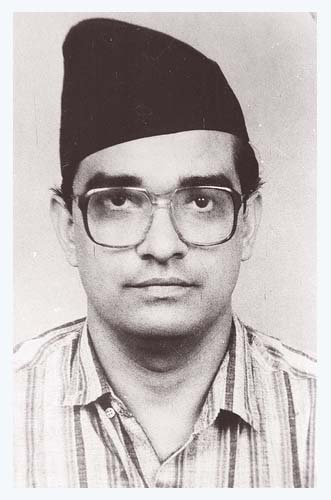
Madan Bhandari (1949–1993) was a prominent Nepalese politician, revolutionary leader, and an influential figure in Nepal's political history. He was one of the key architects of Nepal's transition from a monarchy-dominated political system to a multi-party democracy. Known for his eloquence, ideological clarity, and leadership, Bhandari played a crucial role in shaping the contemporary political landscape of Nepal.
Early Life and Education
Madan Bhandari was born on June 27, 1949, in Dhungesangu, Taplejung, Nepal. He grew up in a humble background and was exposed to the hardships faced by rural Nepalese communities. He pursued his education in Nepal and India, earning a degree in political science, which helped lay the foundation for his ideological and political journey.
Political Career
Bhandari began his political career as a member of the Communist Party of Nepal (CPN). He was instrumental in forming and leading the Communist Party of Nepal (Unified Marxist-Leninist), or CPN-UML, a party that blended Marxist ideology with a democratic framework. His approach resonated with a wide range of people, including intellectuals, workers, and peasants.
Bhandari's rise to prominence came after he introduced the concept of "People's Multi-Party Democracy" (Janata ko Bahudaliya Janawad), a political ideology that balanced Marxist principles with democratic practices. This ideology became the official political doctrine of CPN-UML and played a significant role in the party's success.
Legacy and Contributions
- People’s Multi-Party Democracy: Bhandari's innovative political framework advocated for a system where socialism and democracy could coexist, ensuring people's participation and equality within a democratic system. It was a departure from traditional communist ideologies and was well-received in Nepal.
- Democratic Transition: He played a key role during Nepal’s democratic movement in 1990, which led to the downfall of the Panchayat system and the establishment of a constitutional monarchy with a multi-party democratic system.
- Mass Leader: Bhandari’s charismatic leadership and oratory skills earned him the trust of the masses. He became a symbol of hope for many seeking political reform and justice in Nepal.
Mysterious Death
Madan Bhandari's life was tragically cut short on May 16, 1993, in a car accident at Dasdhunga, Chitwan. The circumstances of his death remain controversial, with many suspecting foul play. His untimely demise was a significant loss to Nepalese politics, and he is still remembered as a visionary leader.
Influence and Recognition
Madan Bhandari remains an iconic figure in Nepal, celebrated for his ideas, vision, and contributions to democracy and socialism. Various institutions, roads, and parks in Nepal have been named after him, and his legacy continues to inspire political discourse in the country.
His wife, Bidhya Devi Bhandari, later became Nepal's first female president, carrying forward his political vision and commitment to democracy.